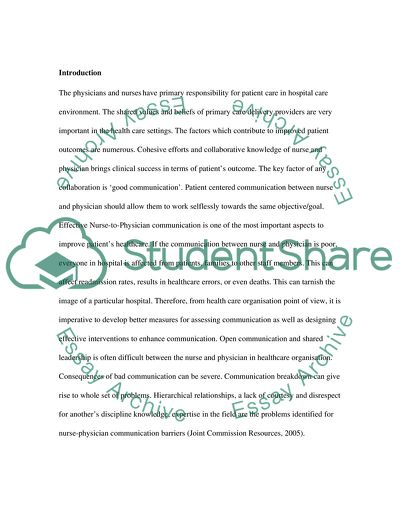Cite this document
(Nurse-Physician Communication Case Study Example | Topics and Well Written Essays - 2000 words, n.d.)
Nurse-Physician Communication Case Study Example | Topics and Well Written Essays - 2000 words. Retrieved from https://studentshare.org/nursing/1719722-physician-nurse-communication-and-how-it-affects-patient-outcome
Nurse-Physician Communication Case Study Example | Topics and Well Written Essays - 2000 words. Retrieved from https://studentshare.org/nursing/1719722-physician-nurse-communication-and-how-it-affects-patient-outcome
(Nurse-Physician Communication Case Study Example | Topics and Well Written Essays - 2000 Words)
Nurse-Physician Communication Case Study Example | Topics and Well Written Essays - 2000 Words. https://studentshare.org/nursing/1719722-physician-nurse-communication-and-how-it-affects-patient-outcome.
Nurse-Physician Communication Case Study Example | Topics and Well Written Essays - 2000 Words. https://studentshare.org/nursing/1719722-physician-nurse-communication-and-how-it-affects-patient-outcome.
“Nurse-Physician Communication Case Study Example | Topics and Well Written Essays - 2000 Words”. https://studentshare.org/nursing/1719722-physician-nurse-communication-and-how-it-affects-patient-outcome.


